Bolivian Food Dishes: Basic Overview
Common Ingredients
Common Cooking Methods
Courses
Meals
Key Taste
Eating Etiquette
Meal Presentation
Culinary Festivals
Influence and Fusion
Popular Types of Bolivian Dishes
-
Soups and Stews
Soups and stews make up a significant proportion of Bolivian dishes.
These food offerings are hearty, savory, and sometimes spicy items for the main course.
These dishes are typically prepared with vegetables, legumes, and meat.
Many dishes have ancient roots and date back to pre-Columbian times.
-
Fried Dishes
Bolivian cuisine offers a large number of fried dishes, including snacks, appetizers, entrees, and desserts.
Bolivian fried dishes are best enjoyed hot with proper dipping sauce.
Many types of fried dishes are popular street food and fast food items in Bolivia.
-
Snacks
Snacks in Bolivia include many types of dishes, but fried dishes are the most popular ones.
These dishes can be sweet or savory, depending on the main ingredients.
Bolivian snacks are also great appetizers and street food dishes.
-
Desserts
Bolivian cuisine offers many delicious desserts for both daily and celebratory meals.
These desserts are often very sweet and diverse in texture, from frozen desserts to firm doughnuts.
The main ingredients of these dishes include fruits, sugar or syrup, and flour.
Bolivian dishes are specialties mainly found in Bolivia, a country in South America. These dishes are significantly influenced by the indigenous cooking traditions and Spanish food offerings.
Moreover, Bolivian cuisine shares many similarities with neighboring cuisines, so its food offerings have a few things in common with Peruvian specialties and Argentinian specialties.
Bolivia is among the birthplaces of many popular vegetables, namely corn, potatoes, yuca (cassava), and chili peppers. Unsurprisingly, these vegetables are staples in Bolivian cooking, along with meat, poultry, and local herbs.
Scroll down to explore informative facts about traditional Bolivian food, such as its core attributes, global popularity, and healthy aspects.
Next, I will delve into the most famous 24 dishes in Bolivia and provide you with detailed descriptions. I will also give you an overview of Bolivian cuisine and highlight common beverages for food and drink pairings.
24 Exceptional Bolivian Dishes
You’re going to learn about the most famous 24 dishes Bolivia has to offer. Your experience will be more fruitful if you use my interactive filters; there are options regarding alphabetical sorting, main ingredients, taste, cooking methods, dish types, courses, and global popularity.
Don’t forget to check out additional filters based on specific culinary styles, such as traditional, national, street food, fusion, exotic, and vegetarian options.
Salteña
- National
- Street Food
- Traditional
Salteña is a classic baked pastry in Bolivia and a local adaptation of Spanish empanadas. It has a football-like shape and a bright golden color derived from ají amarillo, a yellow chili pepper native to South America.
Typical salteñas are filled with a mixture of seasoned chicken or beef, potatoes, carrots, peas, and a sweet, gelatinous broth. The thick broth melts into a deliciously warm soup when heated, turning the inside of salteñas juicy and utterly delicious.
Often enjoyed as a mid-morning snack, salteñas are available in almost any corner across Bolivia, from bakery stores to street food stalls.
Pique Macho
- Street Food
Pique macho is a hearty Bolivian mixed dish hailing from Cochabamba in the country’s central part. While it is a relatively modern creation, invented around the 1970s, pique macho is now among the most sought-after dishes in Bolivia.
As a substantial platter, pique macho consists of bite-sized pieces of beef and hot dog sausages, fried potatoes, onions, and locoto (Bolivian hot pepper), all drenched in a spicy sauce.
Bolivians usually garnish this energy-packed dish with boiled eggs, tomatoes, and mayonnaise before sharing it among friends, with a cup of cold beer on the side.
Legend has it that pique macho was first prepared by the owner of a Cochabamba restaurant for a group of drunk men. She fed them with a dish of her leftovers and issued a challenge: “Piquen si son machos” (“Eat if you’re man enough!”), hence the name of the dish.
Picante de Pollo
- Traditional
Picante de pollo is a spicy chicken dish that originated from Cochabamba. Its main ingredients are chopped chicken, pureed aji amarillo chili pepper, and chuno (Bolivian freeze-dried potatoes).
The preparation of this chicken dish involves simmering the ingredients together, combining the heat from the chili with the earthiness of the potatoes and the juiciness of the chicken. A touch of parsley will complete this perfect lunch and dinner dish.
Fricasé
- Traditional
Fricasé is a Bolivian spicy pork soup hailing from the Altiplano (Andean Plateau). It isn’t the same as the French fricassee.
People prepare fricasé by simmering pork in a rich broth infused with yellow chili, garlic, and other spices. Hominy, chuno or potatoes, and onions are other ingredients, while the soup is thickened with crumbled bread or extra corn flour.
Fricasé is especially popular during the cold winter months and festivities like the Alasitas Festival.
Chicharrón
- Street Food
- Traditional
Chicharrón is a typical Bolivian dish prepared by frying pieces of pork ribs in their own fat with seasonings (such as garlic, lime juice, and spices) until they reach a perfect crunchiness.
Hailing from Spain, chicharrón is a traditional snack and appetizer in Bolivia. Locals mostly serve it with potatoes, mote (a type of boiled corn), and llajua (a spicy Bolivian salsa made with tomatoes and locoto).
Majadito
- Traditional
Majadito is a classic Bolivian rice dish with roots in the departments of Beni and Santa Cruz. It boasts a distinct yellow-orange color that comes from cooking the rice with ground annatto seeds or, in alternative versions, turmeric and paprika.
Majadito is a combination of colored rice and shredded beef, chicken, or charque (dried meat), with a side of fried plantains, fried eggs, and a fresh salad. This rice dish reflects the abundant natural resources and cattle ranching culture of the eastern lowlands of Bolivia.
Sopa de Maní
- Traditional
Sopa de mani is a traditional Bolivian soup thickened with ground peanut paste. Its core ingredients include beef or chicken, vegetables (like carrots and peas), and spices, all simmered in a creamy peanut-based broth.
Upon serving, this Bolivian peanut soup is typically garnished with parsley and served with potatoes, sweet potatoes, or bread. Sopa de mani dates back to the pre-Columbian past of South America, the birthplace of peanuts.
Silpancho
- Traditional
Silpancho is a renowned Bolivian dish from Cochabamba that has a high nutrient content. Locals make it by topping a bed of white rice and boiled potatoes with a thin layer of breaded and fried beef or chicken.
A mix of fried eggs and fresh vegetables, such as diced tomatoes, onions, and parsley, provides the finishing touch to silpancho. While this hearty meal can be layered in elaborate ways, some people like to simply arrange everything on a large plate.
Llajwa is a popular sauce to serve alongside silpancho. In case you’re interested in a portable version, trancapecho is a Bolivian sandwich stuffed with silpancho.
Anticucho
- Street Food
- Traditional
Anticucho is a popular street food in Bolivia, especially in the evenings. It consists of skewered and grilled beef heart or chicken heart, which is marinated in a mix of vinegar, spices, chili peppers, and oil.
With a savory, spicy, and tangy flavor, anticuchos are a wonderfully tasty yet inexpensive dish to serve with boiled potatoes and peanut sauce. While this grilled offal dish is also prevalent in Peru and some other Andean countries, the use of peanut sauce makes the Bolivian version special.
Ají de Fideo
- Traditional
Ají de fideo is a spicy Bolivian noodle dish native to Cochabamba. It mixes the heat of ají (Bolivian chili pepper) with the comfort of fideo (thin noodles) and a choice of ground meat, such as pork, chicken, lamb, or beef.
The star of ají de fideo is a rich and fiery sauce made with ají, tomatoes, and onions. The noodles are cooked directly in the sauce to allow them to absorb all the flavors.
For a creamy and aromatic touch, this Bolivian noodle dish is sometimes topped with parsley and served with potatoes or a slice of Bolivian cheese.
Huminta
- Street Food
- Traditional
Humita, also spelled as humita, is a corn pie widely consumed in Bolivia and throughout Latin America. It is made from a mixture of ground fresh corn, cheese, and spices; the mixture is wrapped in corn husks and then steamed or baked.
Bolivians love humitas because they offer both the sweetness of corn and the savoriness of cheese. This corn-based is also highly versatile and can serve as a breakfast item, a snack, or a side dish.
While humintas share a similar concept with tamales, they are two completely different dishes; the former is smaller and leans more toward the sweet side.
Cuñape
- Street Food
- Traditional
Cuñape is a well-known cheese-flavored bread roll in Bolivian cuisine. It usually has a spherical shape, a crunchy crust, and a spongy interior teeming with the richness of fresh cheese.
Cheese aside, cassava flour contributes to the crispy exterior of cuñape, while eggs and milk add moisture. Bolivians have a habit of consuming these bread rolls for breakfast and snack times.
Locro
- Traditional
Locro is a traditional Bolivian stew originating from the Andean regions. It derives its thick and creamy nature from potatoes, corn, beans, and meat like beef or chicken.
In addition, people also serve locro with a side of fresh cheese or a dollop of spicy sauce to enhance its flavors. Locro carretero is an even more nourishing variation that features the addition of cassava and green plantains.
Milanesa
- Traditional
Milanesa is a common Bolivian dish prepared by breading beef or chicken cutlets in a mixture of eggs and breadcrumbs before frying them to golden perfection. As suggested in its name, it originated in Milanese Lombard cuisine in Italy.
Waves of Italian immigrants arriving in Latin America in the 18th and 19th centuries brought this bread meat cutlet dish to Bolivia. Since then, milanesa has been a popular option for locals, who love serving it with rice, french fries, or salads.
Patasca
- Traditional
Patasca is a traditional Bolivian soup with pre-Columbian origins. Especially popular in the country’s eastern lowlands, it is often consumed during cold months or after festivities as a hangover cure.
Patasca includes beef or pork (often cut from the head), corn kernels, chopped scallions, and cassava. These ingredients are cooked in a spice-infused broth into a hearty and aromatic soup.
Sopa de Mondongo
- Traditional
Sopa de mondongo is a classic Bolivian stew with a great fan base in Cochabamba and Sucre, the country’s capital city. It features diced tripe (known locally as mondongo), corn, carrots, potatoes, and various spices.
With a high starch content, this Bolivian tripe stew is very nutritious and filling. As sopa de mondongo is regularly prepared with a lot of paprika, it is very spicy and suitable for serving with alcoholic beverages.
Chairo
- Traditional
Chairo is a traditional Bolivian dish originating from the Aymara people in the Bolivian highlands. It was created long before the Spanish conquistador showed up and is deeply embedded in Bolivia’s culinary traditions.
The ingredients creating chairo are chuno, lamb or beef, carrots, peas, fava beans, and local herbs. While chairo is literally “soup,” this dish has a thick, stew-like consistency and a rich, creamy taste suitable for cold winter months.
Salchipapa
- Street Food
Salchipapa is a beloved fast food dish in Bolivia and many other South American countries. Its name comes from salchichas (sausage) and papas (potatoes), referring to the main ingredients of this specialty.
To be more exact, thinly sliced pan-fried sausages and fried potatoes or french fries are the building blocks of true salchipapas. But condiments and sides, like ketchup, mayonnaise, mustard, and spicy aji, are also necessary ingredients.
While people believe that the first salchipapa was prepared in Lima, Peru, this fast food is popular with Bolivians of all ages now.
Papa Rellena
- Traditional
Papa rellena, or stuffed potato, is a popular comfort food dish in Bolivia. It was inspired by French gastronomic culture back in the 19th century.
Making papas rellenas means mashing potatoes into a dough, dividing it into balls, stuffing each with a flavorful filling, and coating the balls in breadcrumbs before deep-frying them. The filling mostly includes spiced meat, onions, olives, and sometimes hard-boiled eggs.
Crispy outside yet soft and savory inside, papas rellenas go well with a refreshing salad or spicy aji sauce for a balance of flavors.
Pasankalla
- Street Food
- Traditional
Pasankalla is a popular Bolivian snack resembling popcorn. Its main ingredient is p’isanqella, a special variety of corn with large grains and a pale yellow color.
The traditional method of making pasankalla is to burst the corn kernels in a clay pot, adding sugar and food coloring. Large, fluffy pieces of pasankalla in shades of red, blue, yellow, and more are a common sight at festivals, fairs, and street food stalls.
Alfajor
- Traditional
Alfajor, or alfajores as the plural form, is a famous sweet snack in Bolivia and many Latin American countries. Hailing from Spain, it is among the many European snacks that Bolivians have incorporated into their cuisine.
A typical serving of alfajores consists of two round, sweet biscuits joined together with a layer of dulce de leche (caramelized milk) or jam in the middle. In addition, Latin American alfajores are often dusted with powdered sugar and chocolate or coated in coconut flakes.
Helado de Canela
- Street Food
Helado de canela, literally “cinnamon ice cream,” is a fantastic frozen dessert in Bolivia. During the 1950s, Bolivians learned the technique of making cinnamon sorbet and eventually used it to create this refreshing dish.
With milk, cream, sugar, and cinnamon as the main ingredients, helado de canela is both creamy and fragrant. Locals sometimes add red food coloring to this frozen dessert.
Interestingly, helado de canela is a popular dish for Bolivian funerals and mourning ceremonies. Many of the first helado de canela shops sprang up next to cemeteries in La Paz and Cochabamba, and they still remain there to this date.
Buñuelo
- Street Food
- Traditional
Buñuelo is a popular Bolivian fried dough fritter of Spanish origin. It is light and airy on the inside, while its exterior is crispy and gives a satisfying crunch.
As a versatile snack and breakfast item, buñuelos are often sprinkled with powdered sugar or drizzled with syrup for extra richness. Compared to the original Spanish version, Bolivian buñuelos can have more diverse ingredients, such as cheese, cassava, or anise.
Cocada
- Street Food
- Traditional
Cocada is a classic coconut confectionery widely enjoyed in Bolivia and Latin America. It is made by cooking grated coconut, condensed milk, and sugar into a thick mixture and shaping this blend into various shapes, such as mounds, balls, or bars.
Numerous Bolivian markets, festivals, stores, and food carts offer sweet and chewy cocada. Many families also prepare their own batches of cocada, sharing this nostalgic sweet with their loved ones.
After this tour of the best dishes in Bolivia, why don’t you delve into the heart of Bolivian cuisine and learn about its main features?
What Are the Main Features of Bolivian Cuisine?
To have a deep understanding of Bolivian cuisine, you should learn its major aspects, which I will explore right away.
Bolivian cuisine is a symphony of indigenous and Spanish culinary traditions. For example, the native peoples, especially the Aymara and Quechua, cultivated staples like potatoes, corn, and chili peppers, while the Spanish brought rice, wheat, cattle, and various spices.
In addition, European immigrants, such as Italians, have made great contributions to traditional Bolivian cuisine. Also, the exchange of ingredients and dishes is common in border regions between Bolivia and its South American neighbors, particularly Peru and Argentina.
There are many types of agricultural products in Bolivia due to the country’s varied geography, which includes the Andes Mountains, the Amazon Basin, and the high-altitude Altiplano.
From tropical fruits and corn in the lowlands to potatoes in the highlands, Bolivians utilize a wide range of locally sourced ingredients in cooking. For example, some estimates say that there are over 4000 varieties of potatoes in Bolivia.
Bolivia’s rich cultural traditions and numerous festivals play a role in its cuisine, with special dishes and foods prepared for various celebrations and holidays. Both Catholic and native festivities are ideal occasions for trying special Bolivian dishes.
Next, I will look at the most popular beverages to serve alongside dishes from Bolivia.
What Are the Best Beverages for Pairing With Bolivian Dishes?
The three following beverages of Bolivia are ideal options for complementing dishes in the cuisine.
Singani
Singani is an iconic grape-based spirit from Bolivia. This alcoholic beverage pairs well with dishes that have bold, rich flavors, such as salteña, pique macho, and anticuchos.
Cocktails (Yungueño – Chuflay)
Bolivians enjoy many types of mixed beverages, such as Yungueño and Chuflay. These drinks are a perfect match for rich dishes like silpancho, papa rellena, locro, and majadito.
Mate de Coca
Mate de coca, known as coca tea in English, is an earthy-tasting herbal tea that goes well with lighter dishes or those with a rustic, comforting nature, namely huminta, buñuelo, cuñape, and patasca.
Api Morada
Api morada is a spiced corn-based drink widely consumed in Bolivia. Its mildly sweet taste is ideal for complementing the taste of pastries and light dishes, such as buñuelo, pasankalla, and cuñape.
What do you want to know about Bolivian food? List your questions in the comment section, and I will provide you with in-depth answers! Don’t forget to share this list of Bolivian dishes with your friends!


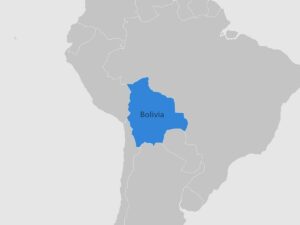
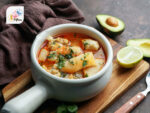

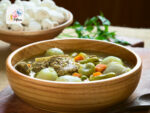
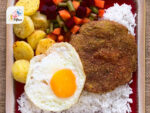

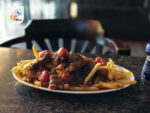

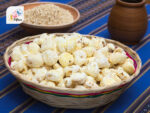
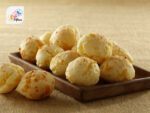

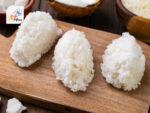

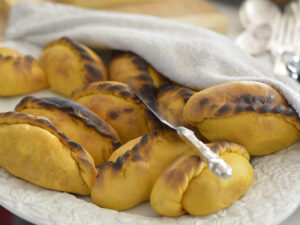
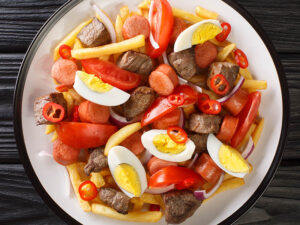
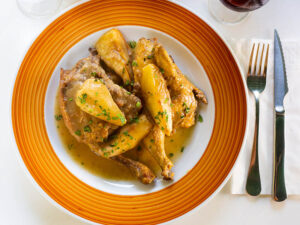
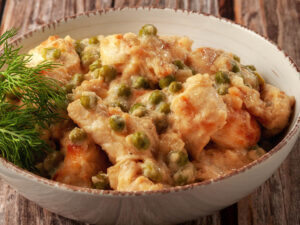
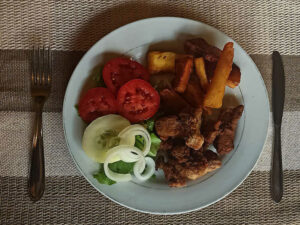
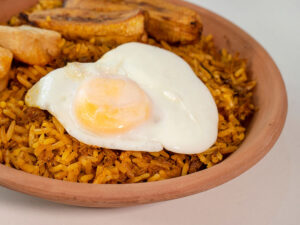
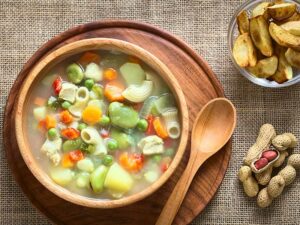
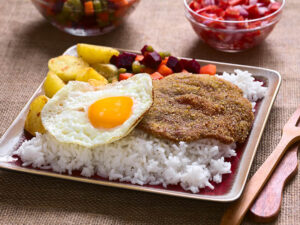
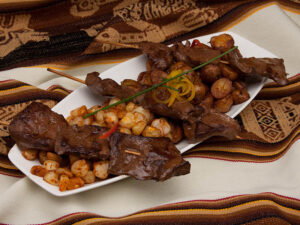
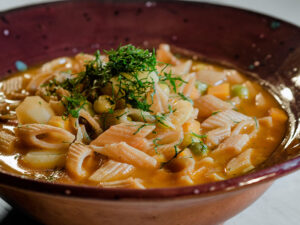
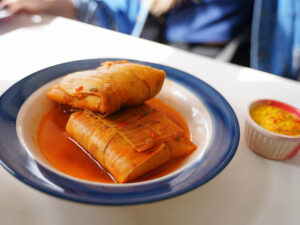
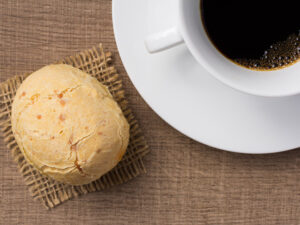
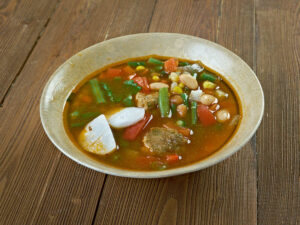
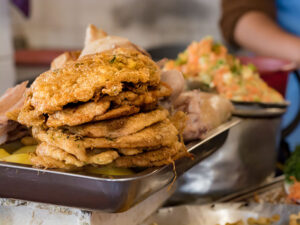
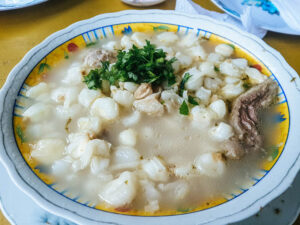
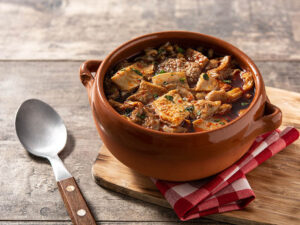
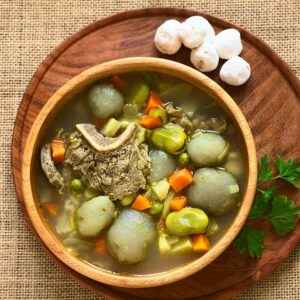
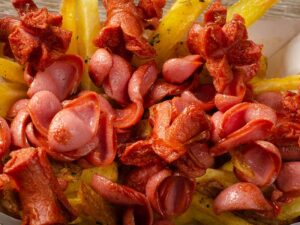
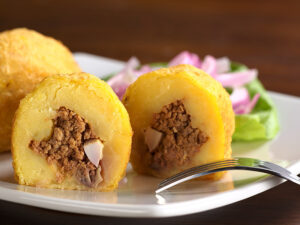
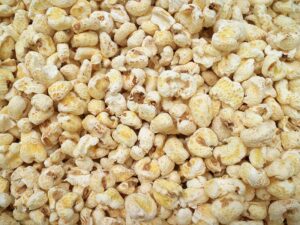
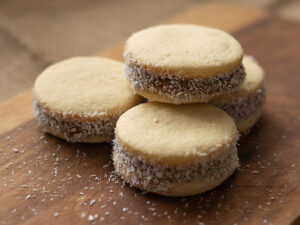

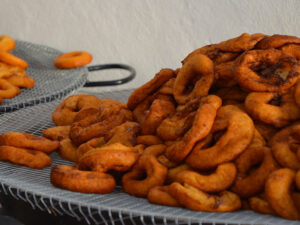
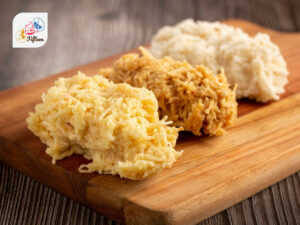
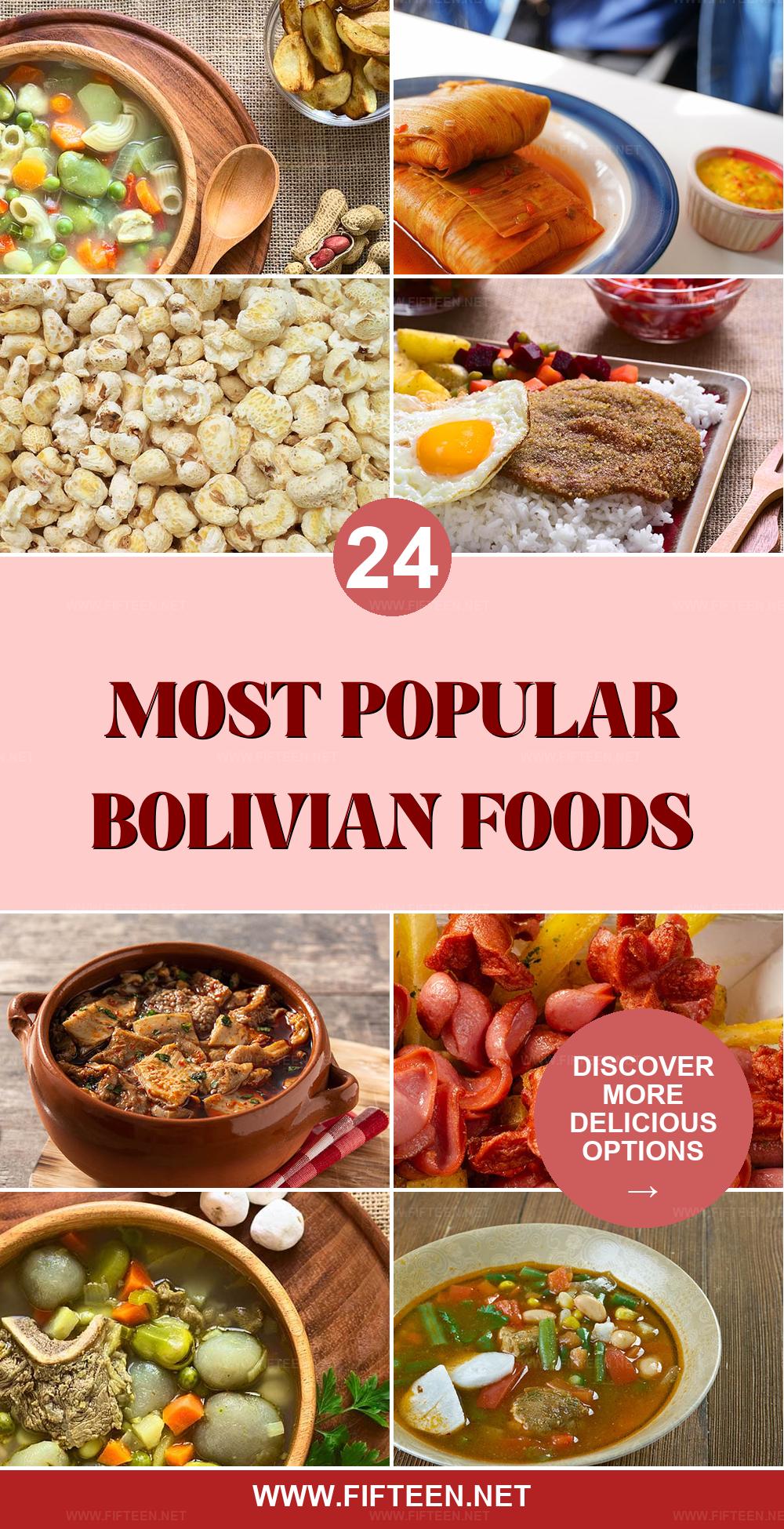
Jamie Scott
Editor in Chief, Senior Content Writer
Expertise
Home Cooking, Meal Planning, Recipe Development, Baking and Pastry, Food Editor, Cooking-video Maker, Western Food Evaluation Expert
Education
Le Cordon Bleu College of Culinary Arts
Local Community College, New York, NY
Jamie Scott is a skilled culinary expert and content creator specializing in Western cuisine. With over 15 years in the culinary field and formal training from Le Cordon Bleu, Paris, Jamie deeply understands how to blend nutrition with delicious flavors. His passion for cooking matches his commitment to making healthy eating accessible and enjoyable.
On Fifteen.net, Jamie brings a fresh perspective to classic dishes and beverages, offering readers insightful recipes, cooking tips, and a fresh view on meal planning that emphasizes taste, health, and simplicity.